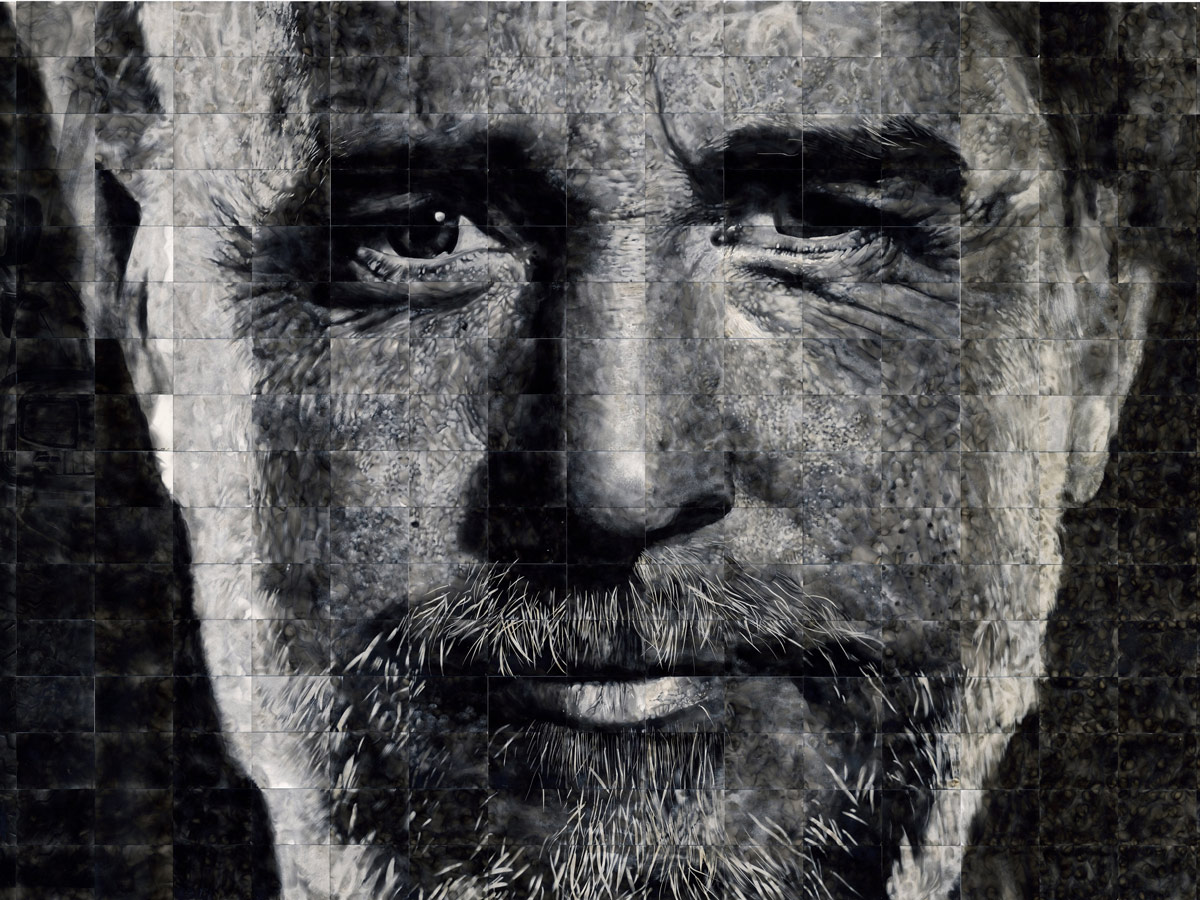
Meet Canadian artist Steven Spazuk, whose exquisite, minutely detailed works rely on the little-known technique of fumage – or painting with fire.
This encounter was originally published on our website in 2021, look out for our follow up interview with Steven, coming soon.
In the past two decades, Steven has built up an astonishing body of work, returning again and again to the theme of nature’s fragility, and the place humans occupy on the planet. Climate change, the migrant crisis and endangered animals regularly feature in his paintings.
With his life partner Danielle Delhaes, and volunteers across the United States, he has also embarked on the ‘Reverence’ series – a collection of artworks based on the traces left by living creatures that seeks to convey human awe in the face of nature. Find his work on his website and Instagram.
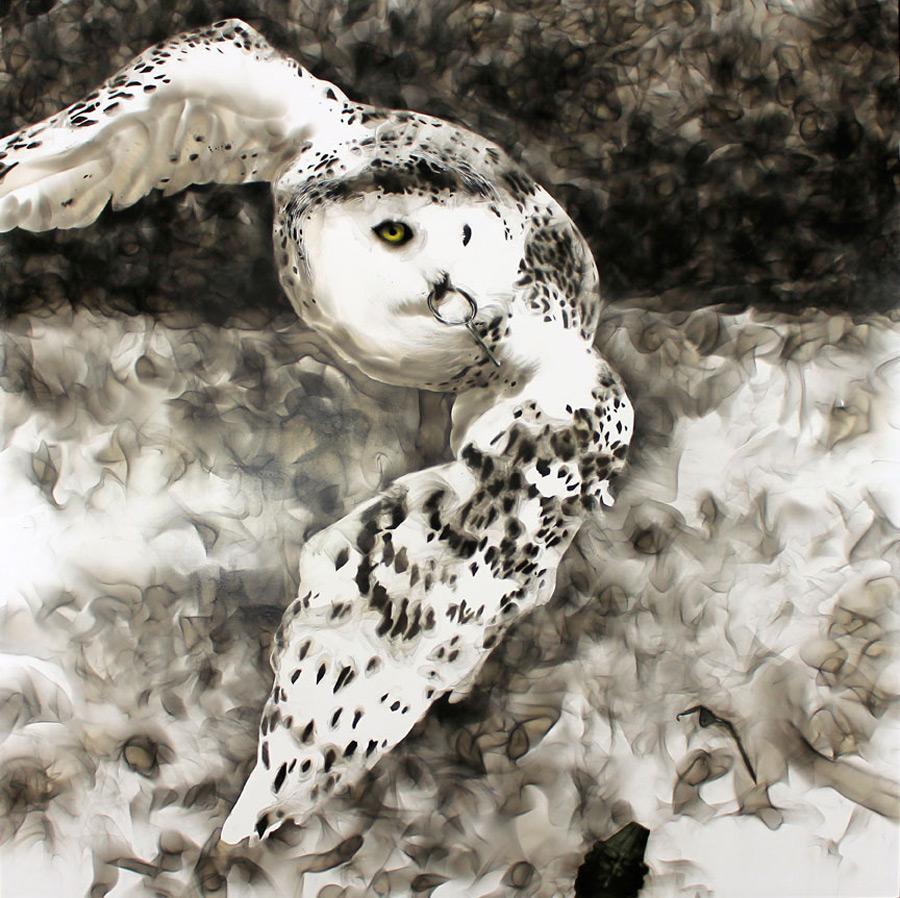
How did you come to start painting with fire?
People often ask me this question and the truth is that it came to me in a dream. In the dream I was in a gallery looking at a black and white landscape. Somehow, I knew that it had been created with fire and completely understood the technique. The next morning I started to experiment. It was an instant love affair with the medium. This was April 2001, and I have been working with fire ever since – relentlessly exploring its creative possibilities.
What’s your background?
I have a bachelor’s degree in communication art, and I started my adult life working as an art director in advertising. I launched my own ad agency at twenty-five and a design firm at thirty, but I would always create personal artworks on the side and have one art show per year. I was working with acrylics and collages creating large-scale paintings in mosaics before I had my fumage dream at the age of forty. From then on, I started to gradually leave the commercial world and concentrate on becoming a full-time professional artist.
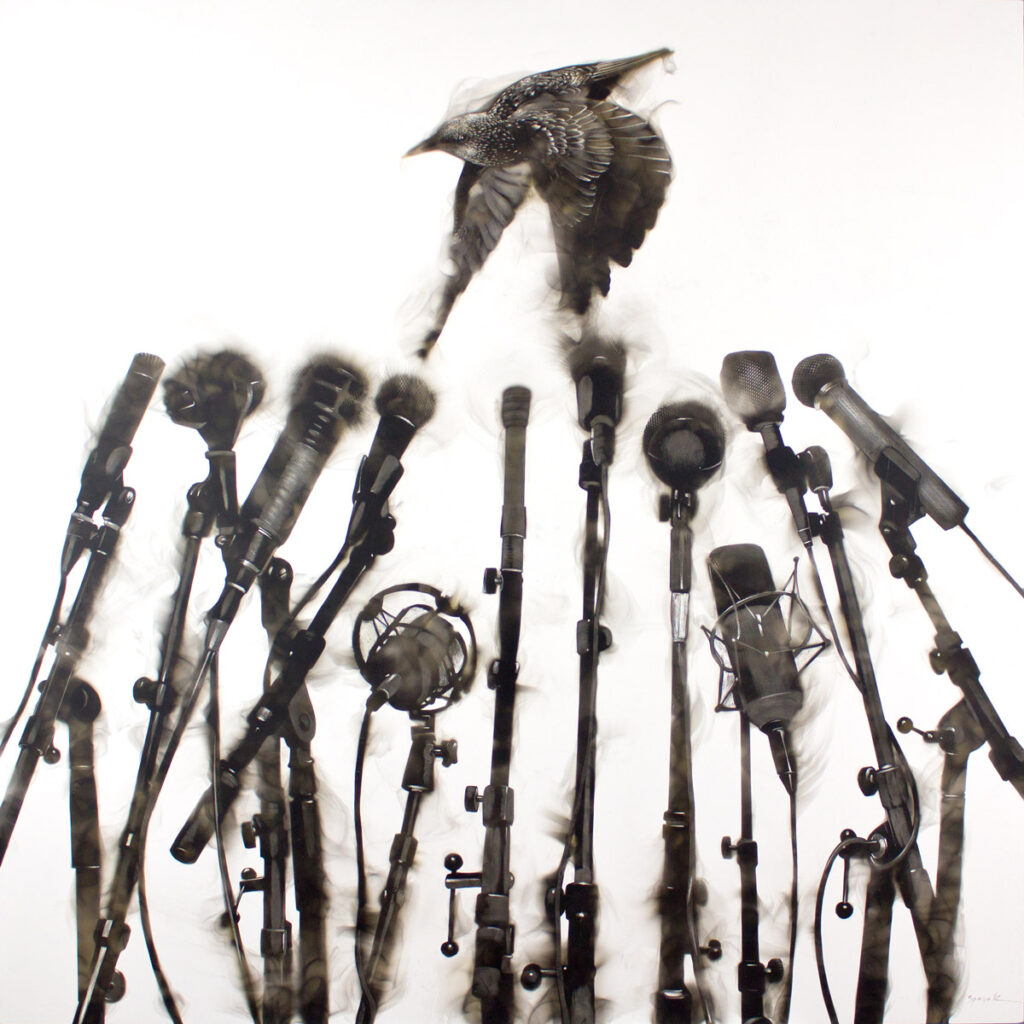
Were you inspired by the history of fumage?
The technique of fumage is very uncommon, almost unknown. It was first used and named by a surrealist artist called Wolfgang Paalen in 1935. When people ask me if I invented it, I often say that cavemen probably used it way before me! But the surrealist movement was definitely my first real art inspiration – mostly Salvador Dalí, who did a few drawings using a candle flame.
Are dreams important in your work?
I remember my dreams most of the time and often get some good ideas from them, but the particular dream was definitively a game-changer. Dreams can be a rich source of inner wisdom, so we should try to listen to them. Dalí called many of his works ‘hand-painted dream photographs’ and one of his most famous was inspired by an actual dream: the imagery of melting clocks in ‘Persistence of Memory’. I once read of Dalí that his trick to remember his dreams was very simple, you need to keep your eyes shut when you wake up and you can go back to the dream and remember it. I still do this, most of the time.
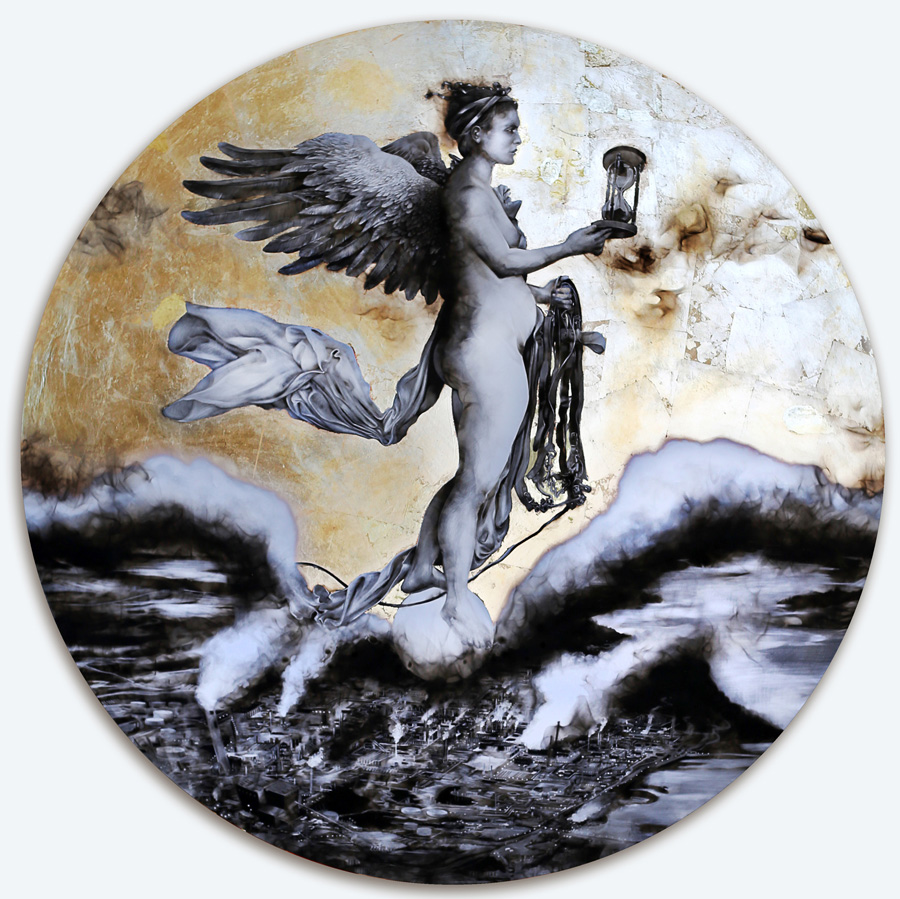
How do you go about creating a work?
I begin a painting once the idea is clear in my mind and I have done some research on the subject, experimented with layout and explored different compositions. After all this pre-production work, I start by tracing the drawing on paper, eventually cutting it out and using it as a stencil to guide the flame on the surface. Once the soot from the candle flame is applied to the surface, I can then scratch it off with different tools to create the light on my subjects. I think the best way to understand my approach is watching one of the videos of me at work.
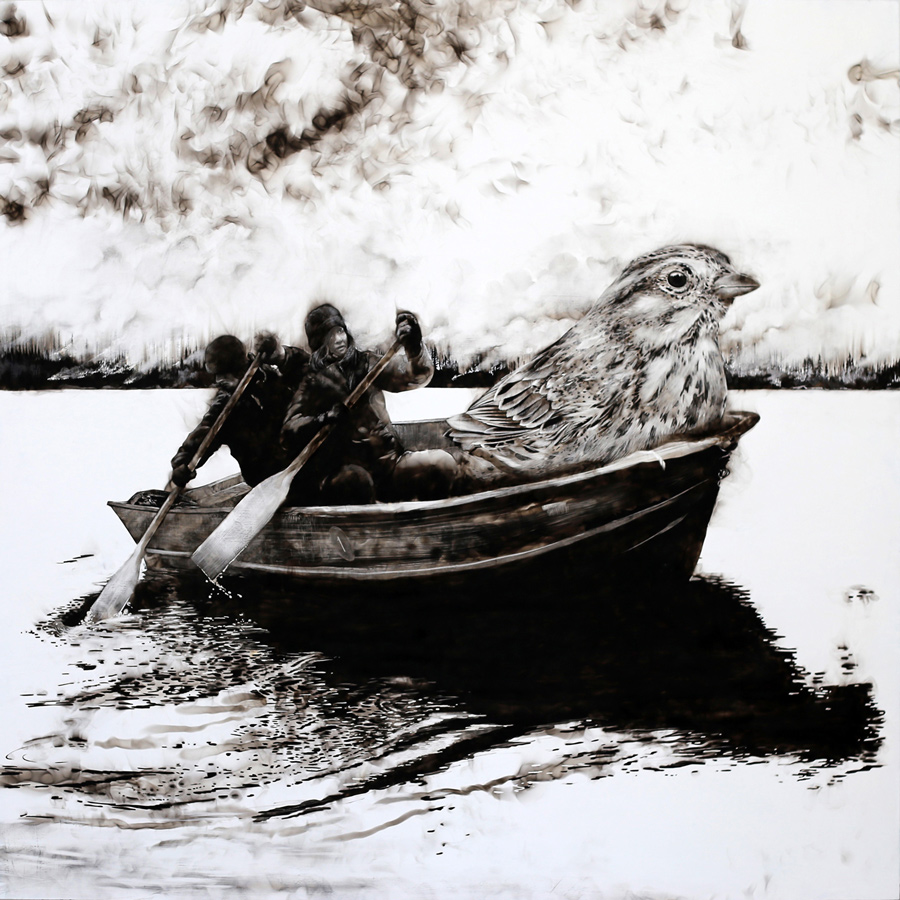
How labour-intensive are your works?
I like extremes in my work. For instance, I enjoy working on a small 5×7 inch piece of paper because it is easy to manipulate and quick to finish. It is the perfect size for improvisation. But I also love working on large-scale paintings, which can be time-consuming. Depending on the scale, an artwork can take a day, a week, a month or sometimes several months.
What are some of the problems of painting with fire?
There are no real problems but there are challenges, and the main one is preserving the work. The soot deposit on paper is extremely fragile and delicate, it can be altered by any contact. I am always holding my breath when I am working on a piece because anything that touches the surface will leave a trace. Once the work is finished, I have to spray-varnish it with an extra fine varnish to preserve it. That finishing part is another challenge because the spray has to be extremely fine and applied at the perfect distance, angle and quantity so as not to ruin the piece.
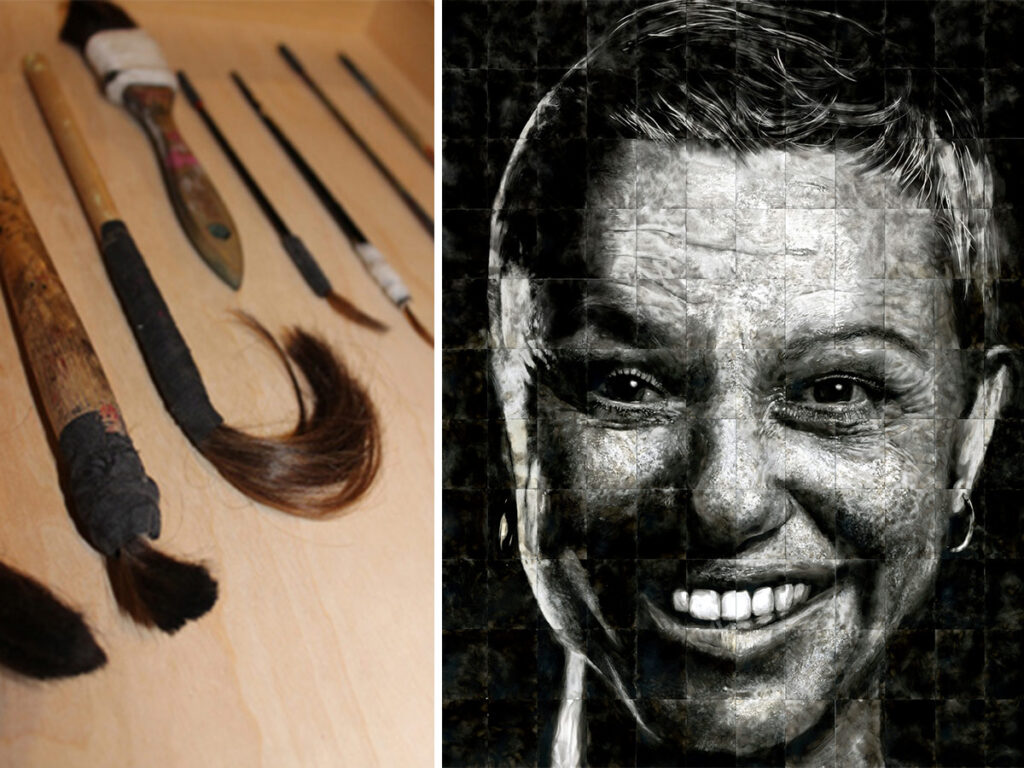
What is the story behind ‘Danielle 3’?
‘Danielle 3’ is a portrait of my wife, who was diagnosed with breast cancer at the age of forty-eight. Our initial shock and fear were quickly overshadowed by our incredible gratitude for the love we shared. Danielle braved a long process to fight cancer: chemotherapy, radiation, and mastectomy. Like a warrior, she now wears the battle scars of cancer’s assault on our lives, a badge of courage for her luminous victory over the darkness of the disease. For this portrait, I fashioned various brushes from the hair she lost during her chemotherapy treatments. These delicate brushes were my tools for capturing the radiance in her face – and they became instruments of healing.
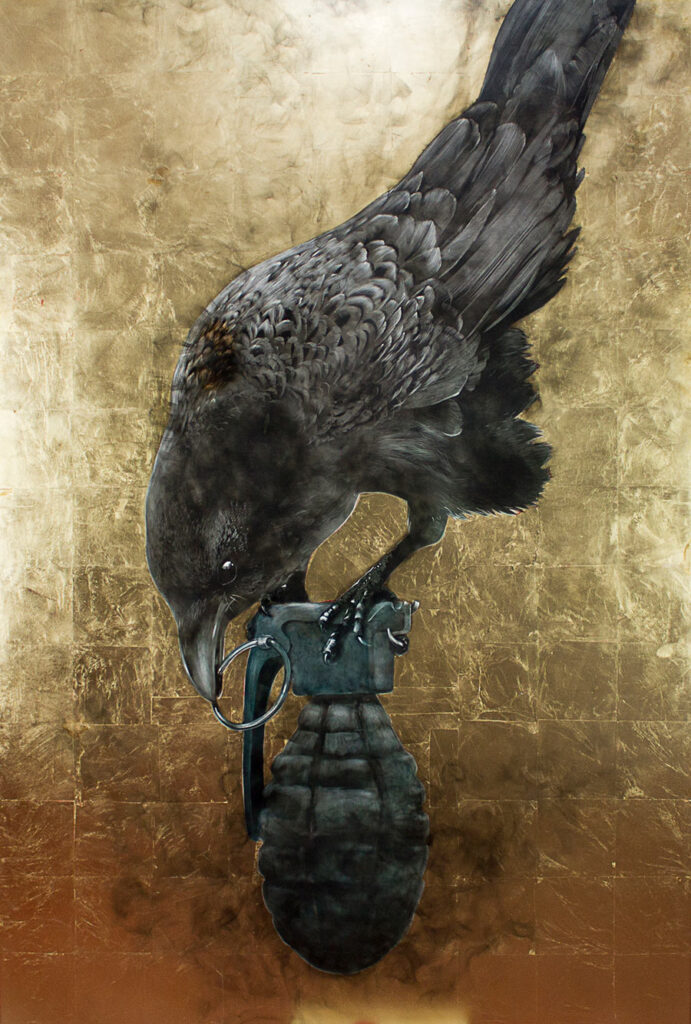
What is it about fire that attracts you as a medium?
Humans have long been drawn to fire; our ancient ancestors used it for warmth, protection and cooking. In fact, fire was critical for our evolution. I guess it is part of our common DNA. Fire is also a great metaphor for us humans. Like fire, we are capable of great power, warmth and energy, but at the same time of destruction. I think it’s the perfect medium to talk about issues like global warming and our hubris towards mother earth.
Are you optimistic about the future?
Despite the problems in the world, I remain optimistic. I am always inspired by the possibility of change, and our potential to create a better planet. We have made many mistakes, but we are sufficiently intelligent to recognize and correct them – but to do so we need to act fast.
